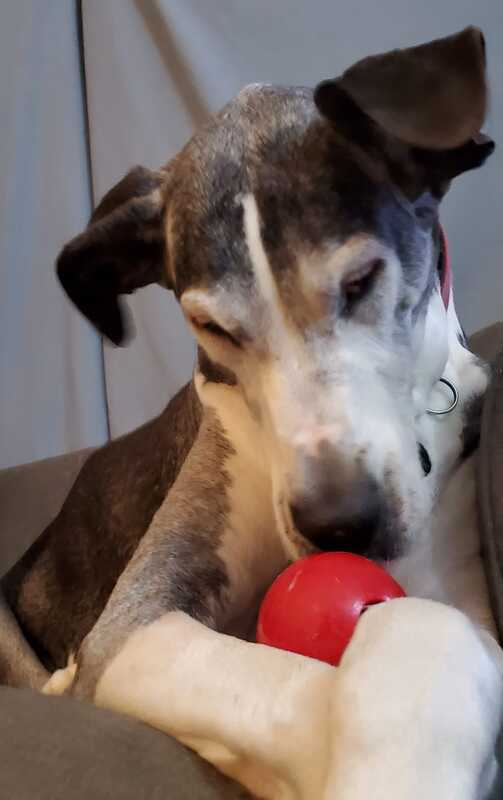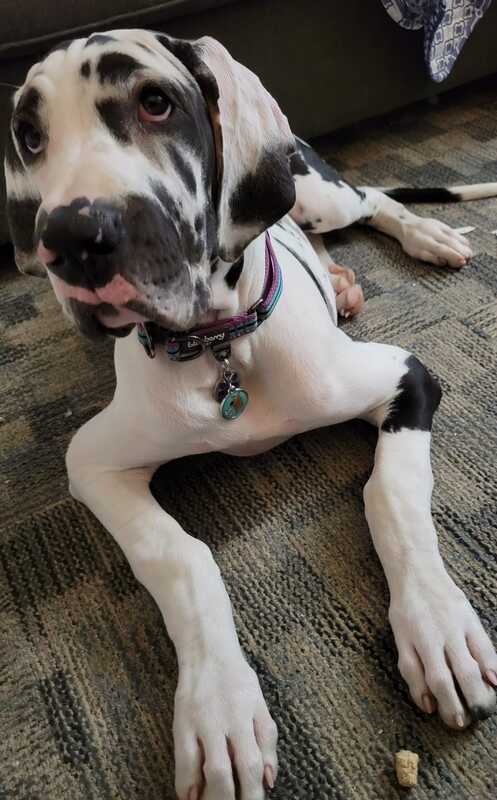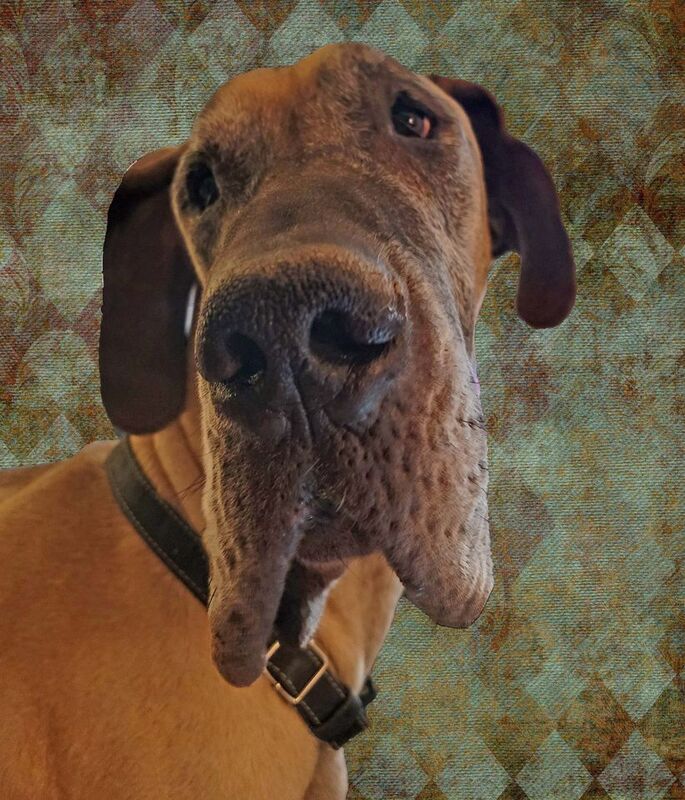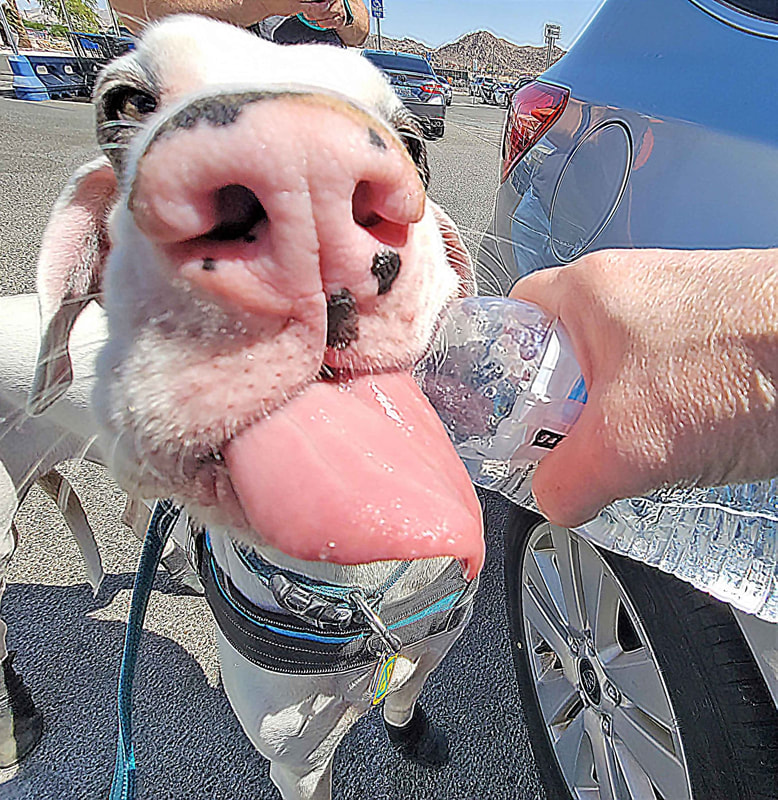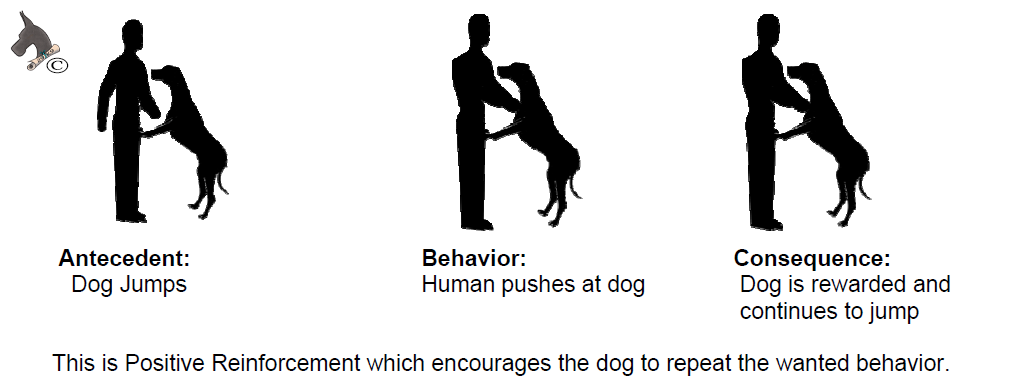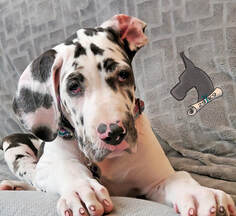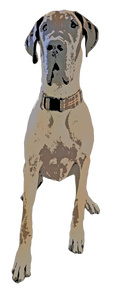 Why are we always asking for the sit? It has always seemed like the good “obedient” choice on our part for our dog to provide. I’ve been in that place myself. I wanted my Great Dane to sit patiently. Then I had an epiphany. Last year we brought our adolescent dane RuhRoh to a group class. Hubby kept asking her to sit. She was being a very good dog, she was calmly greeting people and dogs. She was walking with a loose leash. She was being such a freaking good dog! However she would not sit on cue in that environment. So why were we upset? Aside from being embarrassed, it was the way WE had been trained, the dog should sit. It is the first behavior we are taught in training school and in training classes. It's time to rethink sit, and here are some of the reasons why as well as how SIT may not be the best option for our dogs. 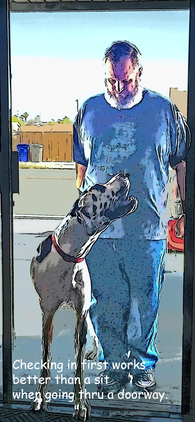 1. Sit before entering a doorway. Why should our dog have to sit before entering a doorway? In the old days it was thought that if a dog entered first they were trying to be dominant over us. In actuality they are usually just excited about what is on the other side. As an alternative polite behavior a "check in" and pause will help you and your dog be on the same page, is usually faster and adds another step in a relationship built on respect.
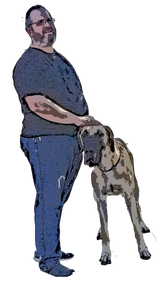 Things to think about: Some surfaces may be hot, hard, rocky or in some other way uncomfortable to our dog. Finally, and most important, as a dog ages those sits can become painful and hard on the hips. "Standing waits" will give you and your dog calm go-to skills that are much more convenient to both you and your dog. To teach this behavior while the dog is standing next to you say their name and reward when they look at you. Practice it a lot, then take it to the doorway, both going out and in. Do this when your hands aren’t full or you aren’t wrangling children, so that they make the connection that waiting calmly is worthwhile. Then add in distractions such as carrying a bag or box, engage a friend to help with greetings on walks. One step at a time.
0 Comments
 R-E-S-P-E-C-T When someone disagrees with science based positive reinforcement training they use a word that scares me, but also inspires me. The word respect. “My dog does it because he respects me” “I don’t want to bribe my dog, they need to do it out of respect”. The word comes up a lot in their argument. The thing is, it also comes up when I explain my training methods. I respect the dog, our training is respectful. We earn the dog’s respect. We reward their good work with something they want. Something they will work for. Yes, we use a lot of treats. We also use love, praise, attention, play. We build a relationship based on respect. re·spect1 /rəˈspekt/ noun a feeling of deep admiration for someone or something elicited by their abilities, qualities, or achievements. "the director had a lot of respect for Douglas as an actor" due regard for the feelings, wishes, rights, or traditions of others. "young people's lack of respect for their parents" verb admire (someone or something) deeply, as a result of their abilities, qualities, or achievements. "she was respected by everyone she worked with" Respect is elicited by or admiration of another’s qualities or achievements, which must be earned. But the “respect” they reference is actually compulsory obedience that is based on the fear of consequence, the consequence of a punishment. My dog will do it because he respects me. Unspoken is the “or else”. Based on fear, not respect. fear 1 /ˈfir/ noun an unpleasant emotion caused by the belief that someone or something is dangerous, likely to cause pain, or a threat. "he is prey to irrational fears" verb be afraid of (someone or something) as likely to be dangerous, painful, or threatening. "farmers fear that they will lose business" com·pul·so·ry 1 /kəmˈpəlsərē/ adjective required by law or a rule; obligatory. "compulsory military service" involving or exercising compulsion; coercive. "the abuse of compulsory powers" When building a relationship it should be built on respect. Our dogs respect us because I treat them with respect. We make sure their needs are met, without fear of consequence. re·la·tion·ship 1 /rəˈlāSH(ə)nˌSHip/ Noun the way in which two or more concepts, objects, or people are connected, or the state of being connected. the way in which two or more people or groups regard and behave toward each other. This is what we mean by relationship based training, a relationship built on respect. Ronda Warywoda, CPDT-Ka, UW-AAB www.29k9.net 1 Definitions from Oxford Languages Stub-born: /ˈstəbərn/ adjetive
having or showing dogged determination not to change one's attitude or position on something, especially in spite of good arguments or reasons to do so. Have you ever referred to your dog as stubborn or had another trainer say this about your dog? Is the dog actually stubborn or is the human? If we keep doing something that is not working and we know it isn't working then aren't we being the stubborn ones? Especially if we know there are other methods that may work better? First we need to find proper motivation. Just like we may be motivated by different things, so are dogs. Using my own dogs as an example I have one that is ball or toy motivated. She will do anything, absolutely anything, for a ball or squeaky toy. I have one that is very food motivated. Especially when it comes to cheese. Then I have one that will do anything to get a drink of water from a water bottle. Last, our newest arrival, changes what motivates him. Sometimes it's food and sometimes it's attention. Motivation can change, depending upon their mood (and if they are hungry). Learning what motivates them gives us a better relationship, mutual respect and a less frustration. What doesn't motivate? Punishment. Punishment suppresses, it does not build a relationship based on respect or trust. It also causes confusion and can lead to fall out behaviors of anxiety, fearfulness, and even aggression. Does your dog have a behavior that is driving you nuts? Perhaps they are getting into the garbage, counter surfing or jumping on people. Every time Fido does this unwarned behavior he is rewarded. Either by your attention or his prize off the counter or garbage can. To resolve the unwanted behavior we have to first identify what we would like them to do instead. Then we put in a management plan to prevent the dog from doing the unwanted behavior while we work on the new skill.
Management is the most important step because every time the dog does the unwanted behavior that bad habit is reinforced, sometimes unintentionally and sometimes the behavior is self rewarding. which makes it much more likely to continue. If you push a dog away while they jump they are excited and rewarded by the attention. Counter surfing or getting in the garbage are self rewarding in that they usually find a prize. After we make sure the behavior cannot continue we focus on teaching the new skill and getting it generalized to lots of different environments and situations. Station training for jumping, leave its for the garbage and counter surfing. We also want to add enrichment to keep their brains busy so they are less likely to get into trouble. If you need help we are here. Email [email protected]. 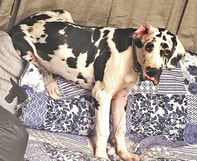 The angst of adolescence. That cute puppy is now an adolescent (think teenager) and has her own opinions and wants what she wants when she wants it. That marble in the brain is rattling around without a place to land How do we deal with adolescence without resorting to aversives which may cause dangerous fallout behaviors later? I'd like to say easy but it isn't. It takes patience, lots of micro training, enrichment and management. 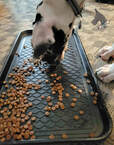 Patience: Remember, this too shall pass. Be patient, you will see the change happening as your dog matures, usually by the age of two. Why 2? Because this is typically when the frontal cortex of the brain is fully developed and the frontal cortex is where self control originates. Micro training: What is micro training? It's small sessions that you can scatter through out the day so that it turns into real life training. Asking for and reinforcing those sits, waits, leave its and settles so that they become habit. Remember, reinforcement drives behavior. You work for cash, your dog works for treats, toys and/or attention. Teaching Fido the calm dog with good behaviors gets the rewards. Enrichment: This is a biggie. Dogs need to use their brains. Mental exercise can tire out a dog just as well as a long walk does. We include it in our day by scatter feeding breakfast, a kong (we have several different versions to keep it mixed up), tricks, putting a few treats in a box, paper towel tube, or a paper lunch bag or even a game of find it.  Management: As the old saying goes, an ounce of prevention is worth a pound of cure. The better you prevent an unwanted behavior from happening the easier it is to teach your dog what you want them to do. Prevent door darting by teaching wait at doorways. Prevent jumping on people by giving them a spot to hang out when your guests arrive. Gate off the kitchen to prevent your dog from counter surfing or getting into the trash. Once these types of behaviors start it is so much harder to stop because they are self rewarding. We shall be grateful that adolescence in dogs is so much less than in humans. Be patient, do lots of small training sessions, engage his brain with enrichment and prevent his opportunity to get into trouble. Show them love and keep them safe. Puppy Insanity. This is RuhRoh, our newest baby. Today she turns 13 weeks old. What have we been working on at home? She came from a great breeder who uses Puppy Culture to raise her puppies. Thanks to that RuhRoh arrived with an excellent sit already in her repertoire. We built on that sit to get some nice waits. Wait before eating, wait before coming out of her crate and after, before going outside, basically a wait anywhere that her puppy craziness might take over.
The weather outside is frightful so I thought I'd give a few tips for easing your dog's fears or anxiety during storms.
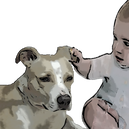 As the song says, "All I'm askin' Is for a little respect". Pet owners often tell me that, in preparation for having a baby, they have started pulling tails and ears in order to get the dog "used to it" before the baby comes. The dog is not 'getting used to it" but is simply tolerating something that is annoying, uncomfortable and may even be painful. It may even increase their anxiety. Tolerance only goes so far, tho, and then a dog may decide enough is enough. If someone was poking you with their finger how long would you tolerate the behavior before finally reacting? You can say "stop" but a dog can only say it thru body language before they eventually resort to biting. If you aren't going to stop your child from pulling the dog's ears then separate them. How does Fido say "enough, I'm not comfortable with this"? You may notice the dog licking you and/or the baby. Yawning. Very round or "whale eye" (where the white is quite visible). Lip licking. Ears pinned back. Tail tucked. Body shifts away. Whining. Lip lifting / showing teeth. Growling. These are all ways the dog is telling you they are not comfortable. What should you NOT do? Punish the dog who is trying to tell you there is a problem. Respect your dog and teaching your child to respect the dog you will help you protect them both. A false sense of security can develop when a baby first comes home. The dog may be curious and even want to be near this new bundle that is taking up so much of your attention. You let your guard down, feeling a sense of relief that Fido appears to be accepting the baby. The baby, tho, is pretty stationary at this point. As months pass and the baby becomes more mobile, as well as more curious about the dog, Fido's anxiety can build. Baby's are unpredictable and some dogs don't handle this as well while some may tolerate for awhile but may eventually say "enough". What SHOULD you do? Institute a very strict supervision and separation plan. Try to keep yourself positioned between the child and the dog, offering treats to the dog. Use stuffed toys to show the child how to pet the dog and make sure you are always there. Teach them to never put their face near a dog's face. Don't leave them alone for a moment as a quick run to another room to get your phone or a soda or that project you were working on could spell disaster, remember dogs and babies are FAST. They only need a moment for something to go wrong. When separating the dog be sure not to make it a punishment. It's a great time for the dog to enjoy a snuffle mat, stuffed Kong, or a favorite toy while in their own space. Hire a reward based or Fear-Free certified trainer who is experienced in behavior challenges, a behaviorist or Veterinary Behaviorist to work with your family and the dog. Talk to the vet and make sure there aren't any physical causes for the dog to be anxious. Even a small tug on an ear or tail or the pat of a hand or a toddler climbing on the dog could be painful for an arthritic dog, prompting the dog to be less tolerant. It's our job to protect both the child AND the dog. The bond between a child and dog can be wonderful but it needs to be safe. 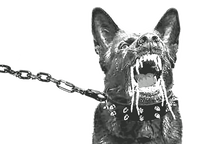 Is your dog reactive to other dogs while on walks? You know what I’m talking about. That sweet, furry love of your life, who turns Cujo-like when he sees certain dogs (or all dogs). You aren't alone, it happens much more often than you realize. When it happens to you, tho, it seems much louder, much worse than when you see another dog react. This is normal because you aren't emotionally invested in someone else's dog but your dog can skewer your heart with this behavior.. You ARE emotionally invested in your dog and this affects how YOU react to your dog's reaction. Embarrassment, nervousness, fear, shame...these are all normal feelings. That's when we typically begin to yell, cajole, threaten, plead for the dog to behave. "It's no big deal" "STOP IT" "C'mon, you know better than to act like this" "ENOUGH already!" Maybe throw in a prong collar or e-collar for good measure to punish the behavior in hopes that it will fix the situation. Instead, tho, the behavior eventually begins to escalate, getting worse. The first step in addressing the behavior is not punishment or bribery but identifying what the dog is trying to tell you. What they are trying to say is usually either “I’m so excited I don’t know how to control my behavior” or “I’m scared and need some space”. Either way your dog is over threshold which means that learning is not going to happen. Trying to yell or beg or bribe will not affect how the dog will react next time So what is a frazzled handler to do? Take a deep breath, step to the side and say “lets go” while turning around and heading the other direction, increasing distance to that which they were reacting to. Once the dog has calmed down and giving you good attention you reward this behavior. Now it is important to make a plan that avoids these situations until your dog is ready and able to handle them. Contact a professional who is experienced and educated in science based methods to work with you and your dog. One who understands that the research is very clear on how to best address the challenges for best results long term and has the experience to teach you and your dog. No flooding, no forcing, no punishment. Solid behavior help instead. Your average dog trainer is just that, a dog trainer. They aren’t educated or experienced in dealing with behavior issues in the best and most modern ways possible. This isn’t about cookie pushing but in timing rewards so that counter conditioning occurs by changing the emotional response to the stimulus (the other dog). Timing is everything, and must occur at precise moments with a high enough value reward while at the same time preventing over threshold or flooding situations where learning does not happen. If you can’t afford a behaviorist there are also online resources, such as CARE For the Reactive Dog, that can help the dog owner learn skills to address their dog’s challenges. Beware of any trainer promising fast fixes…these fixes typically require use of punishment which may suppress the behavior but does not fix the emotional response. This can lead to even more challenging and dangerous behaviors later because the dog is still reacting but with a new level of fear added on. If a friend tries to help you because something worked with their dog remember that not all dogs are the same. Educated and experienced trainers and behaviorists have spent countless hours learning about animal behavior and how to address these things in the best and safest way possible. While your neighbor or friend may mean well, they haven’t put their heart and soul and wallet into learning the best methods to make your dog better. 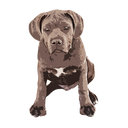 So called "balanced trainers" will often say that trainers must have more than one tool in their toolbox when justifying the use of aversives (prong collars, choke chains, e-collars, squirt bottles...) Science based positive trainers have many tools in their tool box but NONE of these tools hurt or scare. Balanced trainers often jump to the aversive because they think a treat isn't working or "it's faster" but they don't step back and look at the big picture. How does a science based trainer approach differ? We look at the big picture and then break it down and then focus on changing the dog's behavior. Let's take that common unwanted behavior of jumping on people. 1. What is the unwanted behavior: Jumping 2. When does it occur: People coming in the door 3. What is the motivator: Attention 4. What is the wanted behavior: Sit What do we need to do: Manage the environment to prevent the behavior from continuing, teach and motivate the new behavior, teach the human how not ro reinforce the unwanted behavior when reintroducing the dog to the environment. For the jumper we manage the environment by preventing Fido from being in the environment where the jumping occurs. When someone is coming in the door have Fido outside or in another room. Next, we teach the new wanted behavior, sit, until sit is generalized to many situations, locations and with distractions. Before we bring Fido back in we must teach the human that any attention is good attention to a dog and rewards the unwanted behavior. Yelling, waving your arms, pushing Fido away can be a favorite game. Take all of this attention away by turning sideways with your arms crossed and no eye contact. Say "sit" once and then wait for it. It's hard not to repeat the cue but it is important that the dog makes the choice to provide that behavior and it will get faster as they connect the reward to the behavior. In the beginning this takes time so don't try to do this part while you are in a hurry. Jumping has given Fido a lot of attention in the past so he's going to have to work thru it in his brain that jumping no longer nets him any attention. He may even do the sit a few times and then suddenly you may have what is called an "extinction burst". This is when Fido, after doing well, reverts back to that unwanted jumping with a little more gusto in a last ditch attempt to get that jump to reward him with the attention. He is thinking "it worked for a long time, surely it will work again". Now is the time to stand firm. Practice this every day with family members first, then ask friends to work with you. Have treats by the door and tell visitors what you are working on and what you want them to do so that Fido has the best chance at being successful in learning to make the right choices. This is how reward based training works. We identify the challenge, identify the motivator (or reward). We identify the wanted behavior. We manage the unwanted behavior by preventing the situation. We teach the wanted behavior. We ask for the wanted behavior while ignoring the unwanted behavior. This way we avoid punishments that the dog does not understand and, according to repeated studies, reward based training helps set up solid foundations that can prevent long term problems. It allows the dog to learn to make right choices and build self control, creating a life long family member that you enjoy spending time with rather than a dog who is submitting out of fear of the next punishment. |
Ronda WarywodaCPDT-KA, UW-AAB Categories
All
Archives
July 2023
|

